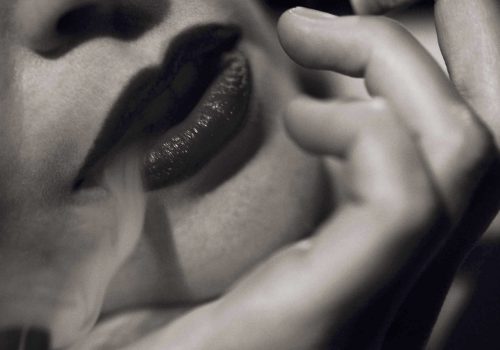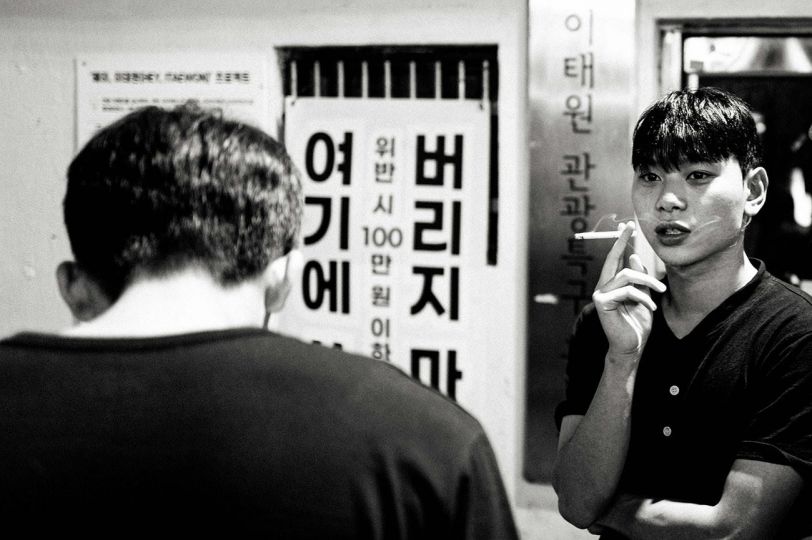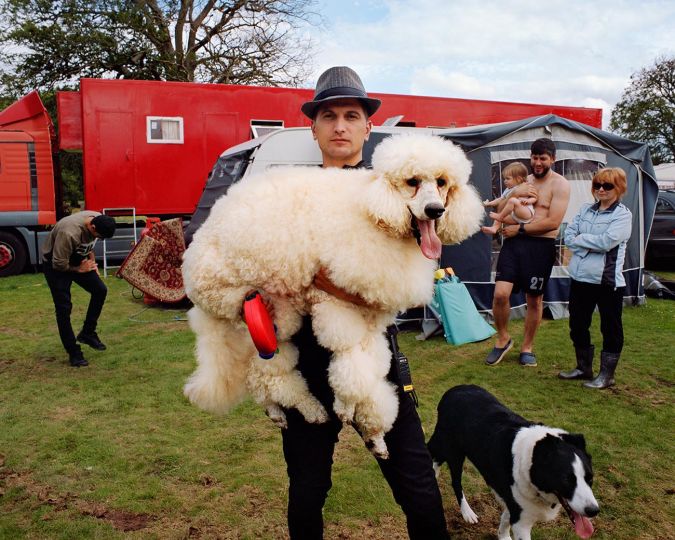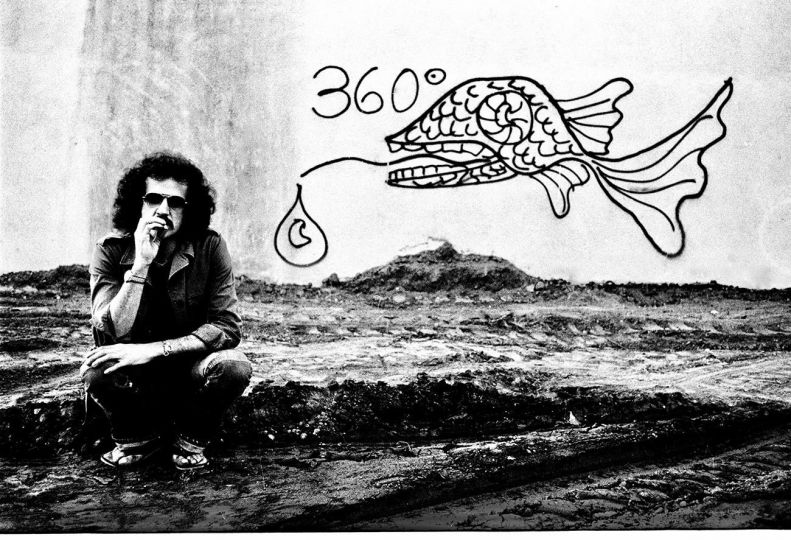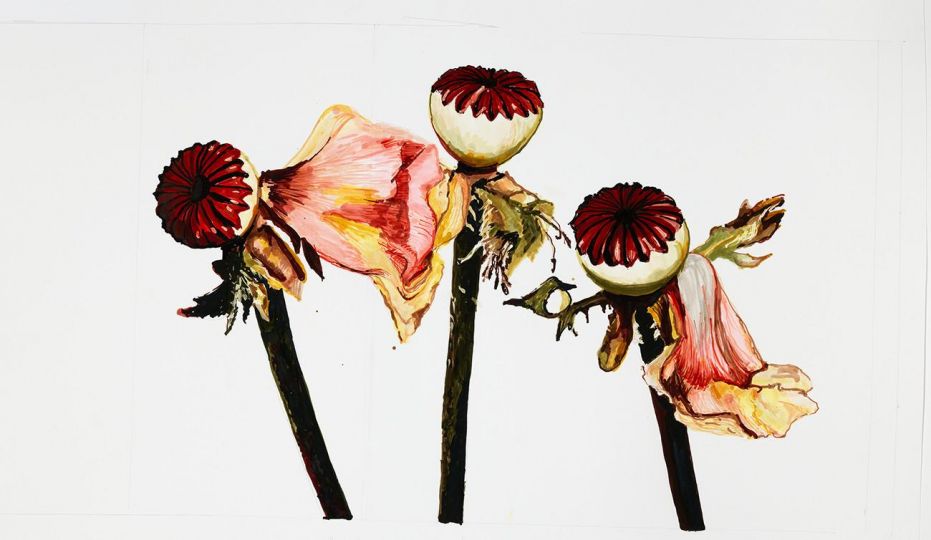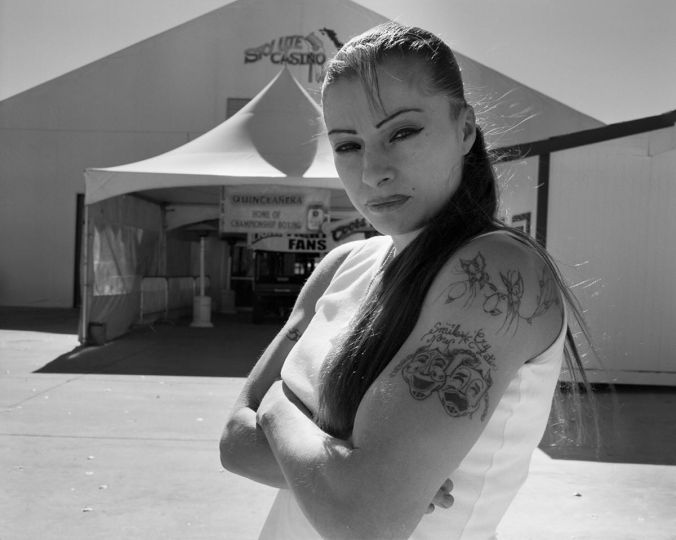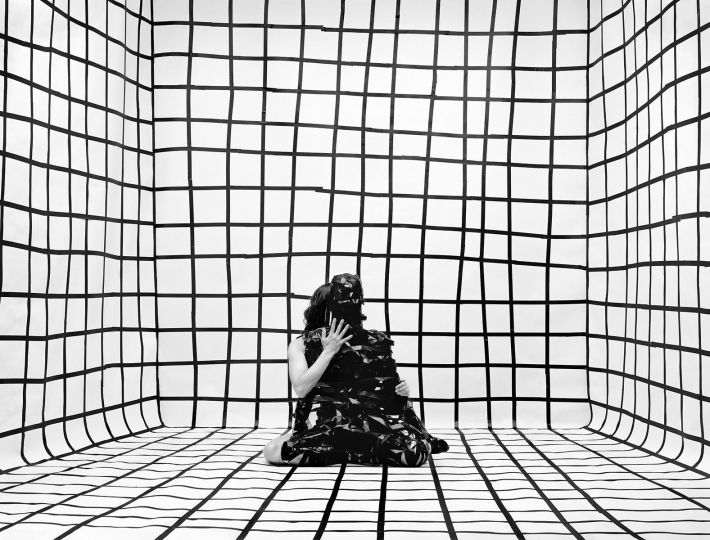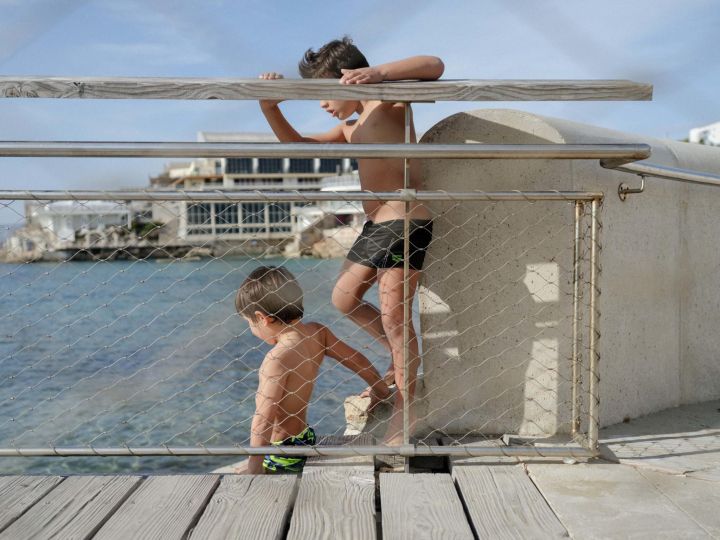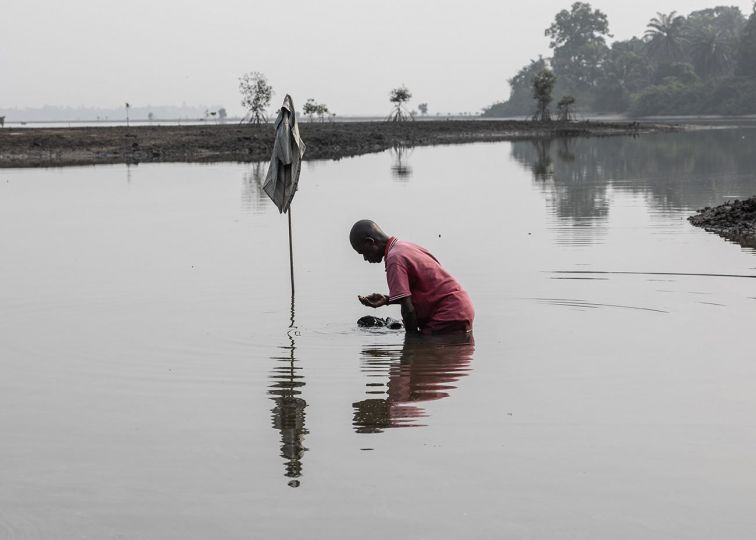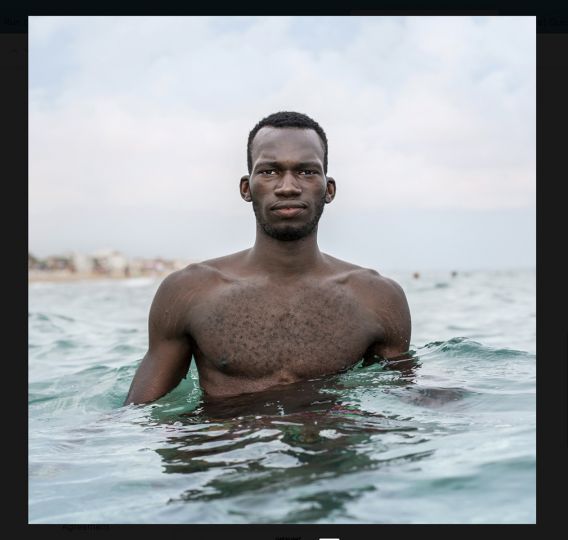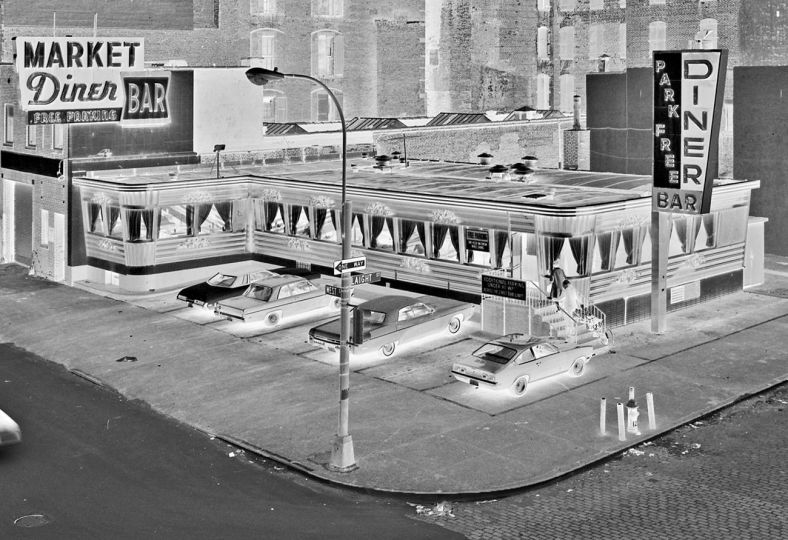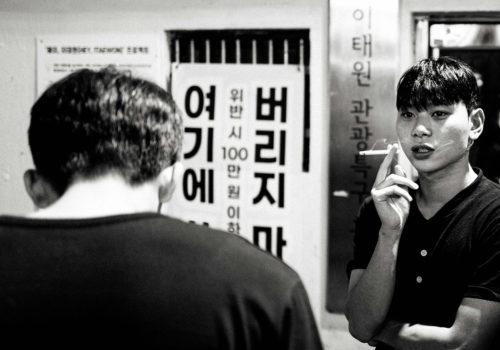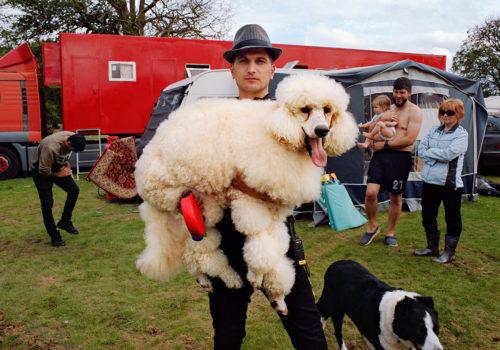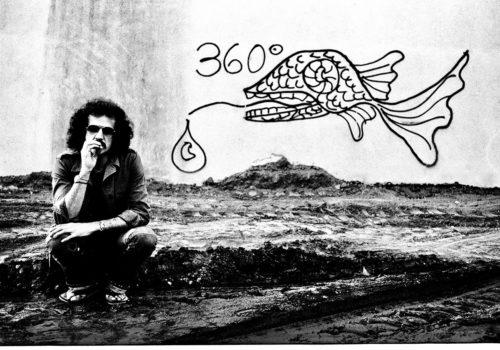Synonymous with the art of traveling since 1854, Louis Vuitton continues to add titles to its series of books, Fashion Eye. Each book evokes a city, a region or a country, seen through the eyes of a fashion photographer.
In 2017, Louis Vuitton Editions published Peter Lindbergh‘s Berlin in the collection Fashion Eye. The book offers a succession a fragmentary overview of the Berlin spirit, since the fall of the Wall until 2012. Portraits, fashion shots and views on the run mingle in a tasty disorder. A “state of transit” where one can see an influence specific to the German photographer, Vincent Van Gogh.
In 1944, Peter Lindbergh was born in Leszno. The German city was returned to Poland a year later. Lindbergh grew up in the German West, in Duisburg. His rather placid youth stirred when he entered the Academy of Arts in Berlin in 1960. Confronted with the classical teaching of the Academy, he dreamt of bright lands, a sunny elsewhere. “I preferred to be inspired by Van Gogh, my idol, rather than painting portraits and imposed landscapes in art schools,” (1) he analyzes. He said to his teachers, “Do you know Van Gogh? I’m going to the south of France and I’m going to see the light, that’s what interests me. “(2)
Lindbergh accomplished the grand voyage with greater ease than the Dutch painter. Influenced by the paintings of Monticelli, Signac, Van Gogh went to Provence in Arles (February 1888 to May 1889), then to Saint-Rémy-de-Provence (May 1888 to May 1889). He thinks he can find in the Camargue and the Alpilles a soft light. Van Gogh gradually abandoned a dark, grayish style, influenced by the Barbizon School. Lindbergh followed this initiatory trip, almost mythological. He moved to Arles – where he still lives – before continuing to Spain and North Africa.
At first glance, Lindbergh’s Berlin work departs from Van Gogh’s colorful and pasty paintings in his Provencal period. Other objections remain. Lindbergh almost naturally chooses black and white, while Van Gogh became a subtle colorist. He ignored notable figures, preferring small people, peasants, factors and acquaintances, while Lindbergh is known for his fashion commands and other celebrity portraits. And above all, the high touches of color of the Dutch painter have nothing to do with the dark photographs of Lindberg. And if Lindbergh gets closer to Van Gogh, we must consider the entire production of the Flemish painter, not only his production in Provence.
The exercise may therefore seem perilous, and yet reconciliations remain. Oil painting with Van Gogh is based on a technique that is quickly frayed. Van Gogh paints quickly, on an easel, whether in front of his model, indoors, and more rarely outdoors, when the weather allows it. The drying time of the oil paint annoys him. By small, quick strokes, with a slightly elongated line, Van Gogh’s landscapes paradoxically celebrate the movement of fugitive impressions. With Lindbergh, we find the same momentum, the same speed in execution and in his desire to capture a scene on the sly. As such, the photograph of the dancer Nina Burri (Nina Burri, Sophiensaele, Berlin 2009) corresponds with the eternal Van Gogh’s Poplar Alley (1884, Nuenen).
The photographer is looking for “fleeting visions”: silent and deserted tables such as Exil Restaurant, Berlin 1898, comparable to the Woman at the Van Gogh’s Tambourine coffee table, 1887. He depicts Berlin in quickly outlined postcards (Berlin, 2009) showing in passing the monuments, blurring the eras and the imaginary, as Van Gogh did with his views in section (The restaurant of the Seine in Asnières and The Restaurant Rispal in Asnières, both painted in 1887). Lindbergh’s Berlin is a game with its symbols, its rigid and superimposed architectures, its graffiti taken on the sly. A post-Cold War gray Berlin, night time in the concrete treasure, pierced by Dan Flavin’s lightning. The process is the same with Van Gogh, despite different pictorial results. Finding the light sources, slicing the darkness of buildings or mountains, playing with the gray or the brown, and celebrating the human as its objects in its most common nature.
Portraits are however are differently considered by Van Gogh and Lindbergh. The painter approaches them most often frontally, concentrating on marked faces (Head of peasant, 1884) before widening the frame to the busts (Portrait of the postman Joseph Roulin, 1889). Only his self-portraits are three-quarters. But above all, the human figure becomes with Van Gogh a laboratory of colors. He plays mainly with primary associations and highlights. With Lindbergh, portraits capture fragments of body (knees, luscious mouth, narrow bust) or lock the models in poses and clothes playing with time. The human figure is never anything but a story of forms, movements and symbols, and never a story of colors. The comparison with Van Gogh is therefore limited. It is a milestone, a shared art of fugue.
Louis Vuitton’s Berlin book addresses Peter Lindbergh’s references as biographical landmarks. Quotes scattered here or there. The reader will be able to search for this inheritance, to suppose it or to refuse it through the fugitive clichés of the German photographer. The book succeeds in showing Lindbergh’s style, agile and sudden, fragmented and powerful.
Arthur Dayras
(1) Peter Lindbergh, quoted in Back to Berlin, Sylvie Lécallier, Berlin, Louis Vuitton Publishing, coll. Fashion Eye, 2017, Paris.
(2) Ibid.

